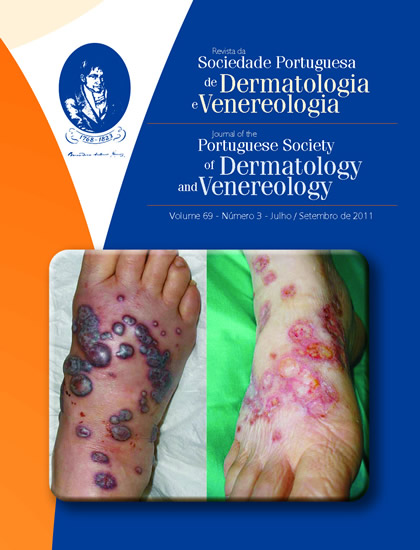SKIN ALLERGY IN CHILDREN
Abstract
As with adults, the history and localization of the dermatitis are crucial for the diagnosis of allergic contact dermatitis, certain contactants and/or habits that are characteristic for the child/adolescent may be responsible for unu- sual clinical presentations. The most important allergens in children are metals, such as chromium (in shoes) and nickel (sometimes associated with cobalt or palladium, the latter also giving rise to contact granulomas), particularly in girls, due to the popularity of cheap jewellery. More recently, other sources, like cell phones, emerged among young adults. Other allergens identified are ingredients of topical pharmaceutical products, particularly antiseptic agents; mercury and its derivatives are still used in some countries, but allergic reactions, even in young children, are most often not cli- nically relevant. Cosmetics, particularly skin care products and wipes, may give rise to sensitization to fragrance compo- nents or preservative agents. Rubber derivatives, often responsible for shoe or diaper dermatitis, resins, and plants may also be among the sensitization sources involved. Moreover, certain occupational allergens (e.g., those associated with hairdressing, construction, and metalworking) are found in adolescents. Changing regulations concerning the presence of allergens in common products, the incidence of contact allergy in children might decrease in the future (e.g. nickel in jewellery and mobile phones and hair dyes in children below the age of 16 years). The use of p-phenylenediamine in temporary henna tattoos still remains a problem. Patch testing in children is safe; most authors consider that irritant reactions are not frequently observed (except in atopics, particularly with metals) and the same patch test concentra- tions as in adults can be used. However, the possibility of false-positive and false-negative reactions has to be consi- dered and, if there is doubt about irritancy, lower patch test concentrations should also be tested. Due to reduced test surface area, diminished environmental exposure to certain allergens and particularly hypermobility of young children, testing with an abbreviated standard series is recommended by some, although others warn that many reactions may thus be missed. Anyway, it is important to take into account the history and clinical picture and to always add possible other allergens and personal products used.
KEYWORDS – Dermatitis; Allergic Contact; Child; Allergens; Hypersensitivity.
Downloads
All articles in this journal are Open Access under the Creative Commons Attribution-NonCommercial 4.0 International License (CC BY-NC 4.0).








